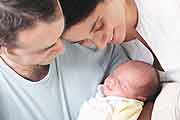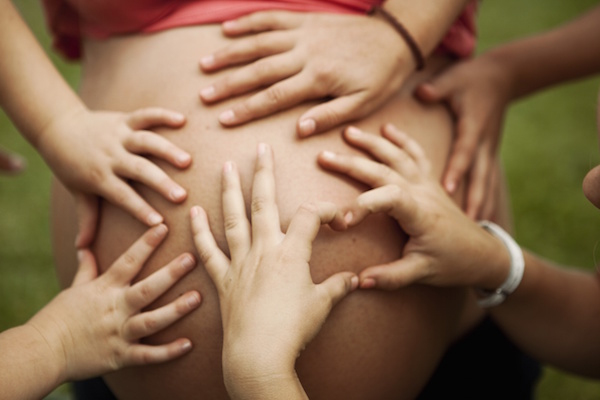
FRIDAY, May 20 (HealthDay News) — The number of home births in the United States has jumped 20 percent in recent years, a new government study shows.
Researchers from the U.S. Centers for Disease Control and Prevention evaluated data from birth certificates for more than 4 million live births registered in the United States in 2008 and in previous years.
The investigators found that 28,357 babies were born at home in 2008, representing 0.67 percent of total births. That was the highest proportion of home births since 1990.
“The percentage of home births in the U.S. declined slowly from 1990-2004, so the recent increase is a surprise in that it reverses a longstanding trend,” said Marian MacDorman, a statistician with the National Center for Health Statistics, which is part of the CDC.
She called the increase “pretty large” for a four-year period.
The trend was driven mainly by a 28 percent spike in home births by non-Hispanic white women, the researchers found. For this group, more than 1 percent of all births now occur at home.
The home births are typically attended by a certified nurse-midwife, a certified midwife or a non-certified midwife. Less often, a physician is present, the report indicated.
The risk profile for home births has declined, the study authors noted. They saw declines in the percentage of babies born at home who are delivered early or at low birth weight or born to teen or unmarried mothers.
The percentage of home births varies among states, with Montana having the highest, at 2.18 percent. Twenty-seven states had significant increases in the percentage of home births between 2004 and 2008.
Women may prefer a home birth for many reasons, including a desire for a “low-intervention” birth, the authors noted in the report. Cost may also weigh in, with home births typically costing one-third of what hospital births do.
However, the controversy about the safety of home birth continues in the United States. “There have been some large studies done in other countries [such as the Netherlands] that found that home births were as safe as hospital births for low-risk women,” MacDorman said.
However, she also cited a study published last year in the American Journal of Obstetrics & Gynecology, which found that home birth is linked with less medical intervention, as expected, but also with a tripling of the newborn death rate.
However, she noted, the research methods used for that study were questioned after the report was published.
Currently, the American College of Obstetricians and Gynecologists and the American Medical Association discourage home births in their policy statements, according to information in the CDC report.
However, the World Health Organization, the American College of Nurse-Midwives, the American Public Health Association and the National Perinatal Association all support home and out-of-hospital birth options for low-risk women, the report noted.
MacDorman isn’t sure what is behind the trend.
However, Dr. Mary L. Rosser, an assistant professor of obstetrics and gynecology and women’s health at Montefiore Medical Center and Albert Einstein College of Medicine in the Bronx, said part of the trend may be Hollywood-driven.
“When they see celebrities doing it, they think ‘Oh, this is a great idea,'” Rosser said.
According to media reports, celebrities including Cindy Crawford, Ricki Lake and others have chosen to give birth at home.
Rosser also believes women who want control of their childbirth experience may be drawn to home births. However, she said, she is “not a fan of them.”
When a patient asks her about it, she tells them that the studies conducted on the safety of home births were conducted on healthy, low-risk women.
“I emphasize to people there is a two- to threefold increased risk of neonatal mortality,” Rosser said, citing research.
Even in low-risk pregnancies, she noted, things can go wrong. “You cannot predict postpartum hemorrhage,” Rosser said.
More information
To learn more about home births, visit the American Pregnancy Association.

